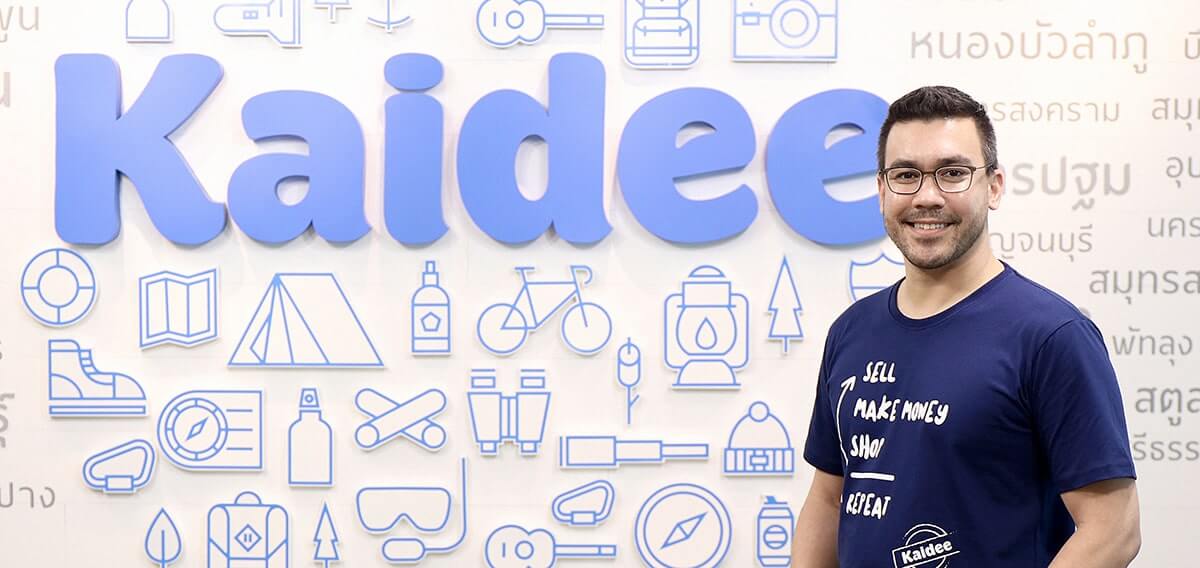Contents
We all know that each individual marketplace is unique and comes with its own set of requirements and challenges. However, from our 17 years of experience, we’ve also found that some challenges are universal for most online marketplaces. The vast majority of marketplaces struggle with or wants to increase monetization, acquisition, conversion, and retention and often these challenges are closely tied to the user experience.
This means that if you are having issues in one of the areas mentioned UX is often a good place to start when you are looking for a culprit and a solution.
If you struggle with monetization, acquisition, conversion or retention it is highly likely that you are not meeting user expectations.
If you were, they’d be staying on your site and happy to pay for the service, right?
The reason you are not meeting their expectation could be due to several issues. Low-quality inventory, poor customer support, hosting an unsafe platform, for instance, are all very common issues that severely damage the user experience.
Analyzing and pinpointing where the issue lie is the first step, the next is finding a good solution to fix it.

How to turn around decreasing user experience
We get it, user experience is a broad area and improving it can be approached in many ways as such it can sometimes be hard to know where to even start. Seeing how others go about it can be inspiring and help you find the solution that fits your specific site.
Let’s look at a real-life example of diminishing UX. Kaidee, Thailand’s largest C2C marketplace, saw their UX drop significantly when not living up to their users’ expectations of short time-to-site. Their users turned to public forums, including Facebook and The AppStore, to actively complain about it. This was, obviously, not good for Kaidee as it hurt their retention and acquisition nor was it good for their users, who clearly was unhappy with the product at the time.
Kaidee had to act. They looked internally, at their own platform, to find ways to shorten the time-to-site for their users and improve their UX.
We invited the CEO of Kaidee, Tiwa York, for a webinar, where he openly shared how they managed to overcome the negative trend of diminishing UX, how they approached an aging core platform and how they managed to save 6 months of development time while achieving 85% automation of their total moderation processes.
Prefer reading?
Here’s the full transcript of our webinar “Kaidee’s journey to improved UX using automation”
Tiwa:
OK, first of all, I may apologize that there is a slight delay from my slides as they come through, so we may have to wait for the visuals to come up on your site.
It has to do with we’re operating out of Thailand. So quite a long way away from Sweden at the moment. So just a little bit about Thailand. We got a sixty-nine million person population, GDP per capita about $17.000, and Internet users are quite a healthy penetration, 57 million. It’s keen to note that the growth in internet users are all smartphone base.
So Thailand’s a market that jumped from desktop straight into smartphones, and desktop is a minor part of the traffic today. Desktop represents about 20% of our traffic, mobile web is about 40%. And mobile apps are another 40%. So in terms of our social media landscape, Facebook users we’re ranked number eight globally in the number of Facebook users. I think still today Bangkok is the number one Facebook city in the world.
We’re heavy users of Instagram. YouTube is a massive stats for us, 2.4 hours per day. In fact, we’re the largest in Asia in terms of consumption per capita of YouTube. The other keynote here is that we’re one of three countries in the world where the messenger app of choice is Line. So Line is dominant in Japan, Taiwan, and Thailand. In fact, Thailand is their number two market, both in terms of users at, 44 million, plus that we are number two in terms of revenue for them as well.
So there’s a little bit of background for the Internet landscape of Thailand and moving on for a time for Kaidee itself. As I mentioned we reached about 30 million Thais and that represents about 329 million visits. We do, roughly, about 27 million to 30 million visits per month. 7 million uniques and about 600 to 650.000 uniques per day, generating about 15 to 20 million page views. And we get about 30000 items listed per day.
Last year we had 8.7 million items listed for sale. And our top category is cars, it’s RodKaidee. So we have a sub-brand, it’s not a subsite just a sub-brand called RodKaidee, which means cars. And by the way, Kaidee translates into English as “sells well”.
Number two is motorcycles, number three is mobile and tablet, and number four is property. So BaanKaidee, which means ‘house sells well’, and number five is auto parts. Another key thing, in terms of our usage, how some people use Kaidee, is that we’ve got a large portion of our traffic that searches for items on the platform, and we do about two to three million keyword searches per day on the platform.
The top five things searched for was PCX, Honda PCX, MSX is another Honda motorcycle, Yamaha R15, so you see motorcycles are a huge category for us. And then speakers, and finally refrigerator. So that gives you a good idea of the business itself. Now, if we take a look at the moderation landscape. We don’t have too much freedom of press in Thailand to put it straight forward.
There are several different laws that we have to abide by. So one of the most strict law is Lese Majeste laws, which means you can’t criticize or be critical of the royal family. So that means, one thing gets public on my site that goes against the royal family. Basically, I’m in trouble with the law and it’s a very serious topic. In addition to that, there’s a lot of consumer protection board laws in Thailand that we have to abide by. In fact, the Consumer Protection Board hired a full-time person to just watch Kaidee.
That’s it, that’s their job.
And then we’ve got, for example, no selling cigarettes. E-cigarettes are illegal in Thailand. Alcohol, so you can sell a bottle, let’s say a Johnnie Walker. As long as there’s no alcohol in the bottle. If there’s alcohol in the bottle, that’s illegal to be placed online and advertised. We also have FDA laws that are very strict. For example, in Thailand the best breast pumps, among the babies category. Breast pumps are considered a medical device and medical devices are not allowed to be advertised unless you have a distributor license for it. So technically by law, if it’s a secondhand item I can trade it. I’m just not allowed to advertise it. Down to the fact, that it’s illegal to print it out like A4 and stick it in front of the grocery store. That’s illegal in Thailand for medical devices. So it kind of gives you an idea of the landscape that we deal with. We also abide by all World Wildlife Fund trading laws for pets.
So we try to make sure that illegally traded animals, ivory, things like that, are blocked off the site and we have people tried to sell elephants, monkeys, birds, that are illegally tried. Yes, they have tried and we have to block all that content. So, kind of gives you a landscape of why we’ve been very serious about moderation, and the landscape that we deal with. And now for us to tell a little bit about our story and our journey with moderation.
When we launched the site we were 100% post moderated, so we would check on whatever got posted but let it go live first. But with the landscape that we have, we realized we need to be pre-moderated. And so we went to 100% pre-moderation. We had to build a tool of our own. We started building that tool in early 2012 and developed it over time and our ad moderators were human. So it was manual and they were moderating about 350 to 400 ads an hour, each.
That tool was developed in-house and built on our back end that we built from 2011. And we were quite serious, but it was also slow. We had always aspired to try to get to 95% of ads moderated within five minutes. We never, at the time with our manual moderation, were trying to block fraud and spam. We were doing about, less than 20% would go live in less than five minutes.
And people were complaining, they would complain on all the message boards, on Facebook, on the App Store and saying why does it take so long for my ad to get approved. They wanted instant gratification, so along this journey of moderation I guess is another thing that, for those of you who aren’t doing in moderation at the moment, it’s also a key differentiator in our strategy. So we believe that moderation and our ad quality team is the heart of our business. And the reason they’re important is because they keep the quality of my marketplace going.
And the idea is that if I don’t have a quality marketplace, nobody wants to walk around in my marketplace, nobody wants to visit me. So we try to keep high control over the quality of listings that go on the site. If you look at the site today, for those of you who are checking it out right, now you’re going to see that we still have struggles with this. In fact, with image quality and all the policies that we have in place, we still can’t capture everything. But we do our best to try to keep a quality marketplace. No spam, quality of images, quality of products, no fake goods, things like that. So it gives you an idea of where we started from.
Now the critical piece in the storyline happens at the end of 2016. I was sitting around having coffee with my CTO and we’re looking at our core platform that we had been built in 2011. And we realized we needed to update the core platform. In the core platform, we had updated everything else to be a services architecture.
We built everything we could in the services, but we had this monolithic core which was our ad posting and members system. We looked at it, and we said, look if we’re going to drive this business for the next 5 to 10 years, we need to fix this. Now, we decided to take the hard yards of fixing that. Part of that, to fix that, meant we would have to rebuild our moderation tool, and rebuilding that moderation tool was a massive undertaking. Because we looked at it saying OK we can rebuild our core system, and what we went to was a services architecture with a messaging platform behind Kafka. We brought in things like Cassandra for real-time tracking of analytics. We switched from a MySQL database to a ProQuest database and really tried to up our technology game. But that also meant I had to rebuild our tool and we looked at and we said, oh my gosh if we have to rebuild the tool, that’s going to be 6 months worth of development and it’s going to take up, basically, my full team of developers.
So today we have a product and dev team with about 30 people. We’re currently growing that. So if anybody listening, that’s interested in working in Thailand, let me know. But we said that’s going to take most of our team to rebuild. At the same time, Besedo came knocking on our door. So Besedo would come to talk to us about their solutions all the time. But for us, we were looking for just the moderation tool. And it happened to be at that point they had just purchased, or just joined forces with the AI company. Is that correct Emil?
Emil:
Yes, we acquired IoSquare back in 2016. That’s correct. Yeah. And they had this new moderation tool that they were building with machine learning behind it.
Tiwa:
So when we talked to William at Besedo, we said, actually now is the right time and we’re keen on just your tool, Implio. We’re not looking to outsource the moderation, because that’s very close to our heart. But could you build the tool that you have, can we integrate it and use that as our moderation tool?
So that’s kind of where we started and started the conversation. And if, correct me if I’m wrong, but I think we were the first integration that was purely a tech platform pure play for Besedo at that time. Is that correct?
Emil:
You were most likely, at least one of the first. I’m not entirely sure, that you’re the first, but definitely one of them for sure.
Tiwa:
Now with that, there were some challenges, and we faced some challenges. One of the challenges we faced was understanding the lifecycle of an ad and how passing that from our core system into Implio, and then receiving that back and how to manage that ad. So it’s not like you just turn on Implio and you’re done. You actually have to think about the whole UX for your customer service team, your internal moderation team and how it passes between our core platform over into Implio.
The other challenges we had was, we had to feed them a lot of learning data. So we worked, I think a total of four months continuously, with Implio’s data science team to try to increase the accuracy of the system.
We also discovered a lot of garbage in our own dataset, and we had to do a lot of data cleaning. We had to figure out how, you know, where is the garbage and how do we get that cleaned up so that we’re passing good quality data so that Implio can learn from our data and understand it in order to bring up the accuracy of the system. I think those are most of the challenges covered. What else do we have? There was another one.
Another challenge, in terms of implementation, was the policies that we have. In setting the policies within Implio to match our policies, that we have to abide by, or by the law. It took our team quite a bit of time to understand how it worked with Implio, and we had to spend time on that and take effort to understand how the policies affect your moderation rules, what gets rejected, what gets accepted, and what has to go to manual moderation.
Another challenge we had, was that the rejection cases (refusal reasons) that we had. We had a lot more rejection use cases than Implio did on their side. So we had to go figure out how we could map ‘this ad is rejected because of X, Y and Z’, but that doesn’t reflect the status with Implio. So these are kind of the challenges that we had to overcome.
I think the total time, from the day that we decided to go forward with Implio to the day we launched, was right around 6 months and that was because we had to work on our side, on how to integrate Implio and also Implio doing all the data learning and data cleanup for us. Yeah. Emil, did I cover pretty much all the topics that we discussed? I’m not looking at my notes at the moment.
Emil:
Absolutely, and I mean a lot of the reasons why this was a time-consuming part as well, is because Implio was incredibly young at the time. And like you mentioned with the quality data. In order to build a quality AI model, that is able to catch a high number of bad content at high accuracy, you need to have quality data to train. So, if you train an AI model with poor data, that’s the result you will get as well.
Tiwa:
So the next slide is the results. How did this turn out for us? By leveraging this tool, today we have greater than 95% accuracy in moderation. We are now reaching upwards of 94% within five minutes from moderation to go live, and 85% of all ads are automatically, or auto-moderated, as we call it. Auto-moderated, which means it’s all machine learning that does it for us today.
When we launched, we were at about 65% automation, and as we gained confidence and understood how to work with the policies and rules within Implio, we grew that to 70%. Then the Implio team themselves worked really closely with us to push that up into the 75, then 80 percentile and now 85% today. So that means about 15% of all our ads come back to the moderation team and we have to manually look through them. Trying to identify all the other rules, is it spam, is it fraud, is it real, is it fake? All the other things that Implio is not sure of when it sends it back to our team.
Yeah. So from our perspective with Implio as a partner, our team has said they’ve found it great as our partner. We work with a lot of different vendors and a lot of partners, Besedo has been really proactive and responsive to our team in how to make adjustments and improve.
Some of the other challenges. Here’s another key detail. Back when we launched with Implio, the UX needed a lot of improvement, in order to do the workflow so we could do it at speed. Implio worked really closely with us and understanding our team’s needs. We showed them our old tool and they really worked to improve that front-end experience and the UX experience for the moderators. In terms of choosing Implio, I honestly don’t know of other platforms that can answer our marketplace needs like they do, and we’re happy to have them as a partner.
I don’t mean that just as a sales gig, but I actually mean it, as it’s been a key part and a key partnership for us in moving our business forward. The other result that we got from this, is it allows my tech team to not have to build this whole tool and actually maintain it. So we get a lot of cost savings in terms of our tech time because that’s offloaded to Implio. Now I don’t know how to measure that in terms of ROI on the budgeting costs, but I can tell you on the different side of what about our moderation team.
So pre Implio, we had 40 moderators working. Today we’re down to 18. If you look at the total cost, it’s about break-even, maybe a little bit more expensive because of technology. But once you put in the cost savings of my team, of our dev time behind it, it’s definitely much more efficient and effective for us. So that kind of brings me to the end of my story, or my journey as Kaidee.





